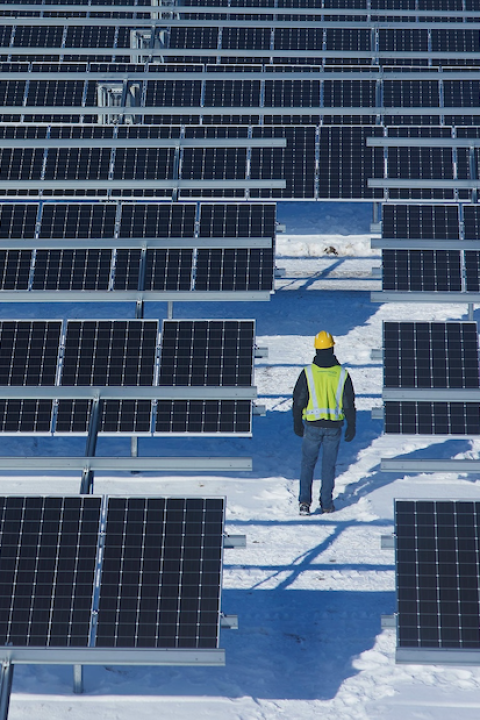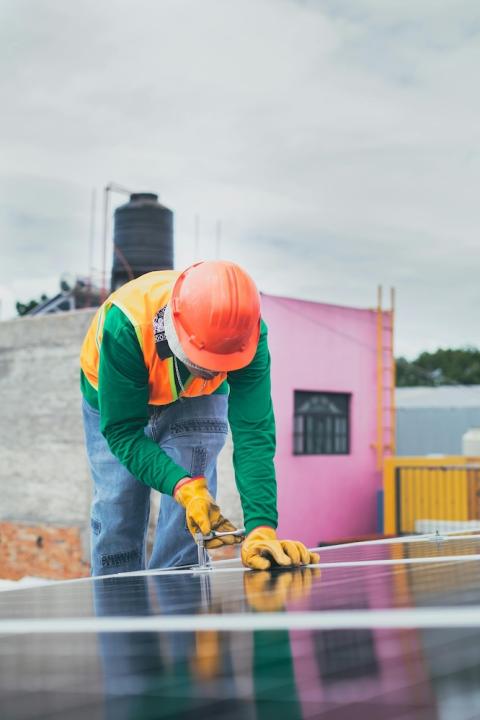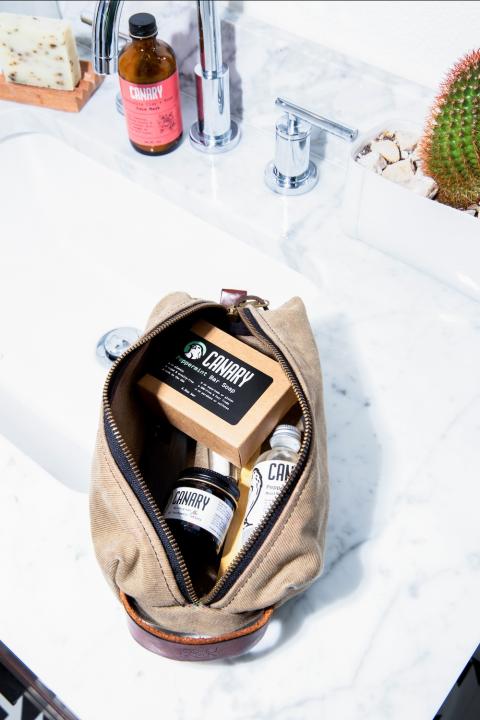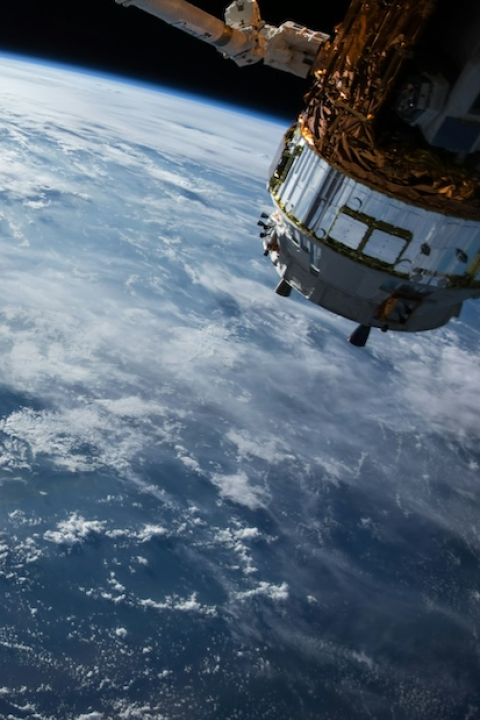Climate protesters at a march in New York City. (Image courtesy of National Partnership for New Americans)
Immigrants often have a broader, more in-depth understanding of the climate crisis. As of October 2023, more than 110 million people worldwide had been forced to leave their homes because of climate impacts. Their lived experiences give them invaluable insight, yet their voices are largely excluded from mainstream environmental movements.
Bringing immigrants' voices to the forefront
“The climate movement, for a long time, has struggled to be inclusive of more voices, especially voices from communities of color,” Ahmed Gaya, senior strategist at the National Partnership for New Americans’ Climate Justice Collaborative, told TriplePundit. “The way that immigrant organizations and refugee organizations had been engaged in climate was sort of being asked by mainstream environmental groups to show up at the last minute, asked to show up at the People's Climate March or other big mobilizations to demonstrate diversity, or being funded to lobby on climate legislation that had already been written and was just trying to get past the finish line.”
Gaya, who has been involved in the movement for 15 years, is a part of the immigrant community. His family came to the United States as immigrants from Pakistan, which has been hit hard by flooding, landslides and drought. Just like the rest of the Global South, which is experiencing the brunt of the climate crisis, Pakistan contributes less than its share of carbon dioxide emissions to the problem — under 1 percent of global emissions, to be exact.
The climate crisis’ effects on Pakistan, Gaya’s remaining family in the country, and the rest of South Asia are what propelled him to take action. He sees the same motivation among others in the immigrant community.
“I know a lot of other people have similar stories,” Gaya said. “And I’ve felt for a long time that diaspora communities have a really … important role to play in this movement and powerful stories to tell.”
Diaspora communities are groups of people who identify with a geographic location but are living elsewhere. These communities are often active within the climate movement but struggle to receive recognition, he said.
“We saw members of diaspora communities, other folks in the South Asian community, folks from the Philippines … getting involved in both the global conversation as well as in local climate policy and having a very powerful narrative voice on climate action here in the United States,” he said.
Gaya is confident that those narrative voices can have a profound effect on climate policies at every level. With this in mind, the Climate Justice Collaborative is helping immigrant communities organize around the issues that matter to them, including climate adaptation within the U.S., the fair employment transition, the energy transition and emissions reductions.
Immigrant communities face a higher burden from climate change
Due to their experiences with climate change impacts in their home countries, it’s not surprising that immigrants are also deep in the trenches in their new homes. They’re not only speaking out on policy matters, either. They’re also helping the communities they’ve settled in prepare for the climate crisis and recover from the resulting disasters, Stephanie Teatro, the director of climate justice and migration at the National Partnership for New Americans, told TriplePundit. Part of that process is ensuring that climate action doesn’t leave anyone behind.
In the U.S., immigrant communities and communities of color tend to feel the impacts of climate change much more acutely because of where they live, the type of housing that’s available to them, and a lack of access to assistance programs that are reserved for U.S. citizens, Gaya said.
Even when immigrants can qualify for assistance for things like upgrading their homes to be more resilient and energy efficient, language and cultural barriers to access often remain, he said. Language barriers don’t just apply to program application and access. There’s also a lack of contractors who can communicate with people in their language.
Immigrant communities also face tougher circumstances when it comes to natural disasters becoming more prevalent and more devastating with climate change. Not only is there an additional language barrier when emergency notifications aren’t inclusive, but immigrants are often afraid to access disaster shelters and services that are staffed by federal agencies and police, Gaya said.
All of this adds up to a stronger sense of urgency among migrant communities, especially since many have already relocated within their home countries before needing to immigrate abroad. Not only is it imperative that migrant voices be heard, but they must be taken seriously and heeded within the context of this intersectionality.
“What we're really seeing right now is how climate impacts intersect with existing vulnerabilities that are driving migration,” Teatro said. “In our region, the dry corridor of Central America, droughts will force people to move to cities where they may be the victims of violence or other forces. So, we're really seeing climate impacts being a vulnerability multiplier that is causing people to move.”
Changing the narrative to recognize migration as climate adaptation
As the consequences of climate change become more severe, adaptation is key. But that doesn’t just mean shifting how we grow food or build infrastructure. A shift in perspective on climate migration is desperately needed, too. That’s why the collective is pushing for the passage of the Climate Displaced Persons Act to make safe pathways for people forced to leave their homes and address the causes of their displacement as a part of U.S. climate strategy, Gaya said.
Migration is often presented as a threat — both by right-wing politicians seeking to build barriers and well-intentioned climate activists who portray it as a disaster to be prevented, Teatro said. She stressed the need to change this dangerous narrative.
“What we really hope is to instead have broad consensus, support and recognition that migration is actually a solution to the climate crisis,” she said. “It's a form of adaptation, and it's something that we can plan for. We can create the systems to not only support people who are displaced by climate change themselves, but who are going to be bringing so many benefits, resources, and skills to the communities where they choose to make their homes.”
Those resources and skills include the ability to help guide climate action and fill the gaps created by the shrinking U.S. workforce. Immigrant and migrant communities include a large number of people who were land defenders and environmental activists in their countries of origin, Teatro said. As such, they’re equipped to continue the fight in the U.S. Meanwhile, even traditional jobs are short staffed, which doesn’t bode well for the growing sustainable energy sector and the sheer number of workers needed to make the energy transition.
“We just simply do not have enough folks to do the work that it's going to take,” Teatro said. “Immigration itself [can be] a key solution and a key strategy to those goals.” For example, the Climate Justice Collaborative’s network of immigrant fossil fuel workers are leading the fight for justice within the energy transition in New Mexico, she said. Their goal is to guarantee that the related skill upgrades and jobs are available to their communities.

Riya Anne Polcastro is an author, photographer and adventurer based out of the Pacific Northwest. She enjoys writing just about anything, from gritty fiction to business and environmental issues. She is especially interested in how sustainability can be harnessed to encourage economic and environmental equity between the Global South and North. One day she hopes to travel the world with nothing but a backpack and her trusty laptop.














